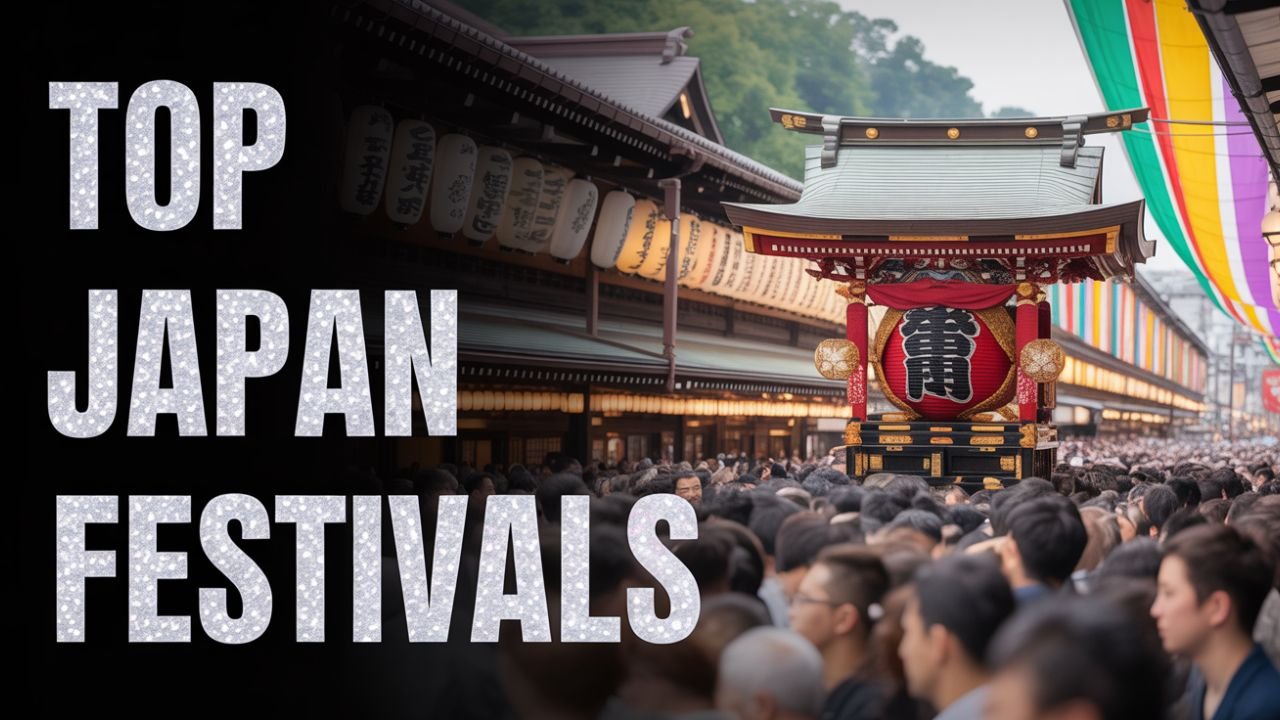Japan is renowned worldwide for its unique culture, colorful traditions, and celebrations. Each season features different festivals that not only reflect the diversity of Japanese culture but also play an important role in the country’s social and religious life. Let’s learn about Japan’s top 10 cultural festivals, which attract both local and foreign tourists.
1. Takayama Spring and Autumn Festival
Located in Gifu Prefecture, Japan, the Takayama Festival is held twice a year, in April and October. This festival is a beautiful and historic celebration held against the backdrop of the Japanese Alps. The Sanno Festival in spring is an opportunity for locals to pray for peace and a good harvest. Cherry blossoms are in full bloom during this time, and people participate in this festival dressed in traditional clothing.
The autumn Hachimangu Festival is a thanksgiving festival, featuring four large wheeled yatai floats. Each float carries 100 lit lanterns, and the floats are displayed in a grand procession through the historic streets of Gifu. These floats date back to the 17th century and feature intricate designs created by highly skilled artists.
2. Nebuta Festival, Aomori
Held in early August, the Nebuta Festival is one of the most famous summer festivals in the Tohoku region. This festival is primarily known for its floats shaped like warriors, which take a team of 300 people three months to create.
During this festival, children and adults alike wear traditional Haneto costumes and dance to the beat of drums. On the final evening, the floats are released into Aomori Bay to wash away sins and pray for a long and healthy life for the people.
3. Sapporo Snow Festival
The Sapporo Yuki Matsuri is held in the Hokkaido region in early February. The festival began in 1950 when local students created six ice sculptures. Today, it is one of the largest ice and snow festivals in the world, featuring international ice sculpture competitions and attracting millions of tourists.
The magical illumination of the ice and snow sculptures at this festival mesmerizes spectators at night. Family entertainment options include snow rides, ice slides, and ice bars.
4. Michinoku Yosakoi Festival, Sendai
Yosakoi is a traditional Japanese dance that began in 1954 and is full of energy and excitement. The Michinoku Yosakoi Festival, held in mid-October, is one of Japan’s third-largest yosakoi festivals.
More than 5,000 dancers from over 150 teams participate in this festival. Each team’s traditional costume includes a line from a folk song from the Tohoku region, instilling the joy and energy of life. The festival offers a unique blend of rock and traditional music.
5. Awa Odori Dance Festival
The Awa Odori Festival takes place in mid-August and is celebrated as part of the Bon Obon festival. This dance originated in Tokushima 400 years ago and has become Japan’s largest traditional dance festival.
During the night, people wear yukata and ame gasa hats and dance. Awa Odori is also known as the “dance of fools” because its origins date back to a playful dance performed by soldiers during the celebration of the festival.
6. Izumo’s Welcoming the Gods Festival
The Izumo Welcoming Festival is held on January 3rd. This festival is held around Izumo Taisha, one of Japan’s major religious sites. On this day, it is believed that eight million gods come to Izumo to discuss the year’s events.
During the festival, people perform rituals on the beach and enjoy local delicacies, such as Izumo soba and Shimane Wagyu beef. Natural sites like the Hinomisaki Lighthouse and the Tochikue Valley are also tourist attractions.
7. Tanabata Festival, Sendai
The Tanabata Festival is held in the first week of August. This festival is based on the mythological story of two lovers, Orihime and Hikobushi, who were separated on either side of the Milky Way.
Thousands of decorations are hung throughout the city’s streets and markets during this festival. People write their wishes on paper and hang them on trees. A grand fireworks display is held at the beginning of the festival, and tourists celebrate by wearing traditional yukata.
8. Sado Island Earth Celebration
This music festival, held in mid-August on Sado Island, is organized by the internationally renowned Kodo Taiku group. The three-day festival features music, workshops, and cultural activities.
Open concerts are held in the evenings at the Ogi Harbor Market, and workshops and smaller performances are held during the day. This festival attracts music lovers from Japan and around the world.
9. Koyasan Candle Festival
Held on August 13th, the Koyasan Candle Festival coincides with Obon. More than 100,000 candles are lit along the paths and around the temple.The spirits of ancestors are welcomed.
This festival offers a peaceful and spiritual experience, where visitors participate in religious rituals while walking along paths decorated with lotus-like lights.
10. The Beginning of the New Year, Ise Shrine
The tradition of Hatsumode is celebrated at Ise Grand Shrine from December 29th to January 1st on the occasion of the New Year. Millions of people visit the shrine to begin the new year with good wishes.
In this festival, people pray for Japan’s prosperity, world peace, and abundant harvests. The ancient and religious significance of Ise Shrine makes it one of Japan’s most important Shinto sites.
These festivals in Japan not only showcase the country’s cultural diversity but also give every visitor the opportunity to experience the country’s vibrancy and traditions. Whether it’s dance, ice sculptures, music, or religious rituals, Japan’s festivals have something special for everyone.
